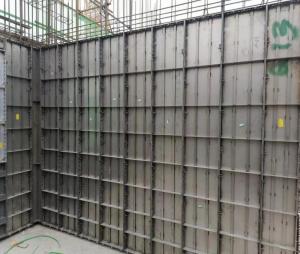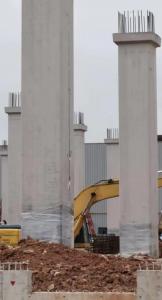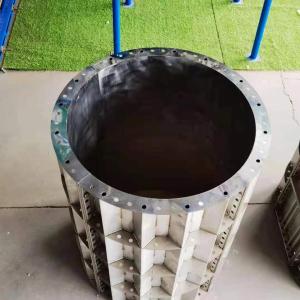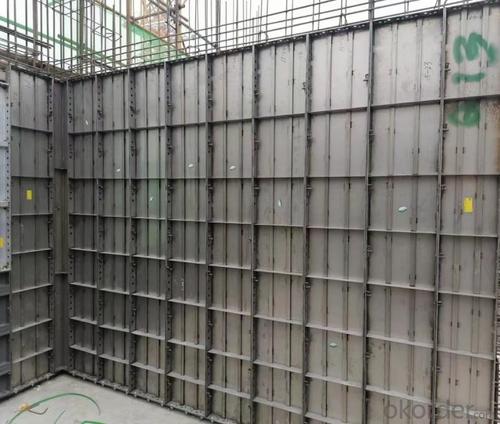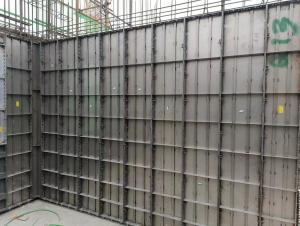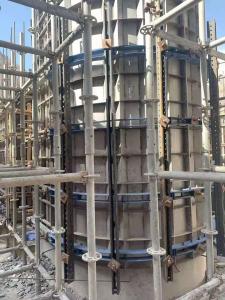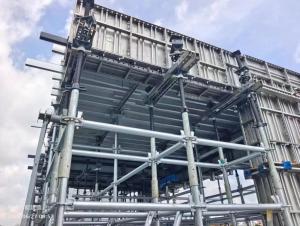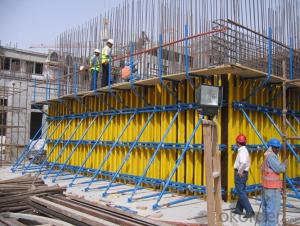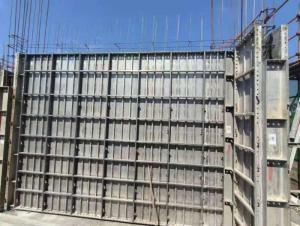Best qaulity of wall steel formwork, Stainless Steel Formwork,formwork for concrete walls
- Loading Port:
- Shanghai
- Payment Terms:
- TT or LC
- Min Order Qty:
- 1 set
- Supply Capability:
- 1000000 set/month
OKorder Service Pledge
OKorder Financial Service
You Might Also Like
Stainless steel formwork
Replaceable size aluminum formwork:400X1200mm , 400X1500mm
FORMWORK FOR building PROJECTS
Composition:
Painted steel frame with 3,5mm profiles
5mm stainless steel sheeting
Sheets welded from behind
Specifications :
Modular panel formwork
Panel thickness 12cm
Extremely strong and rigid
Fully compatible with the MF-80 system
Large size panels
Limited number of parts
High pressure resistance, minimum 100kN/m²
Long life expectancy
Stainless although magnetic sheets
Advantages:
1 Stainless steel formwork, 100% follow the design of aluminum alloy formwork system, it is interchangeable, compatible and can be used together with aluminum formwork at the same time .
2It is made of high-strength stainless steel strip by rolling and laser welding. It has good corrosion resistance and high density,is not easy to rust and has no fire hazard.
3Long service life, many turnover times, high recycling value
The number of turnovers is large, especially the characteristics of no dust, no need to brush or less mold release agent, and the characteristics of low renovation costs will bring unlimited optimistic prospects to it.
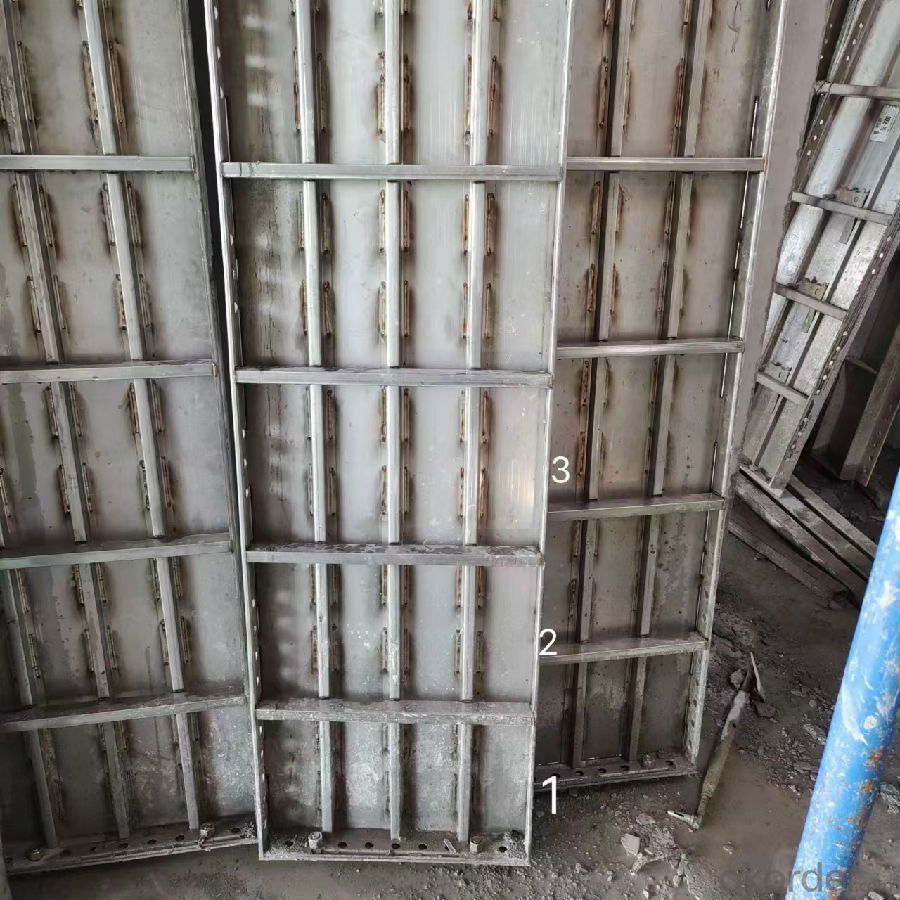
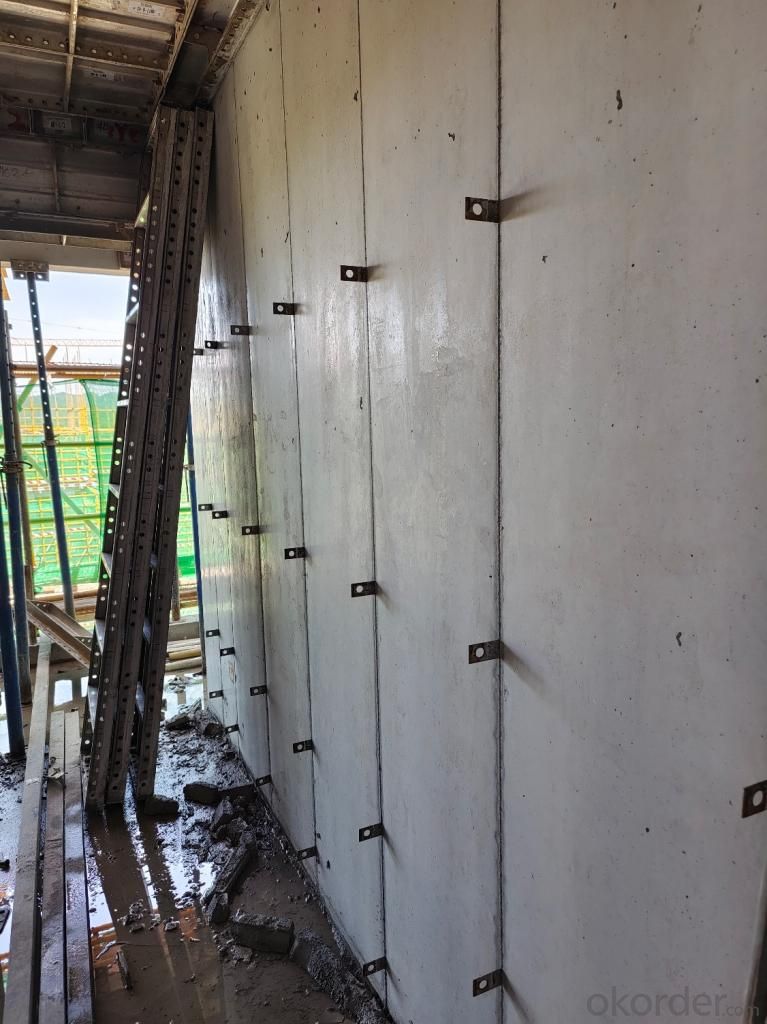
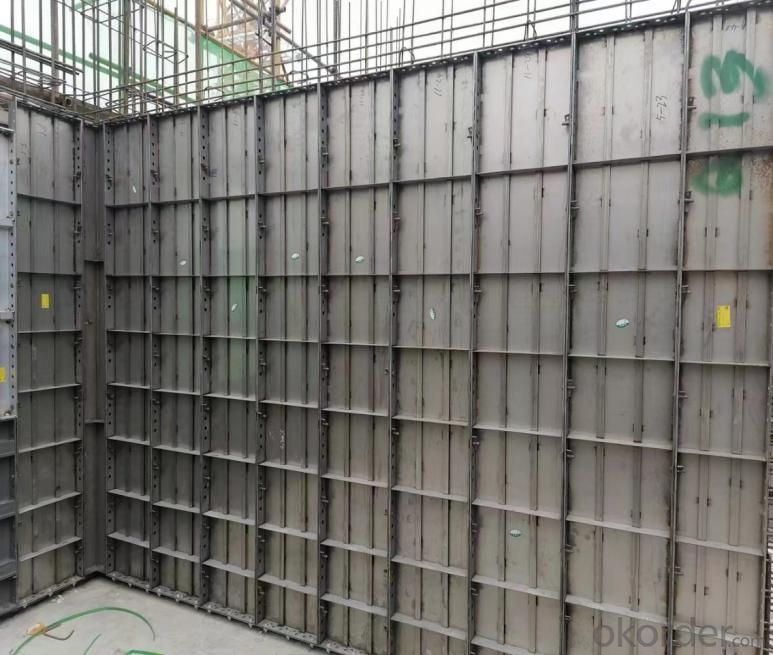

- Q: How does steel formwork handle moisture and humidity?
- Steel formwork is highly resistant to moisture and humidity due to its inherent properties and effective protective measures. The steel used in formwork construction is typically treated with anti-corrosion coatings, such as galvanization or epoxy paint, which create a barrier against moisture penetration. These coatings protect the steel from the corrosive effects of water, preventing rust formation and structural degradation. Additionally, steel formwork systems are designed with tight joints and connections to ensure minimal water ingress. This reduces the risk of moisture accumulation within the formwork, which could potentially weaken the structure or affect the quality of the concrete. Furthermore, steel formwork is non-absorbent, meaning it does not absorb water or humidity. This characteristic prevents swelling, warping, or distortion of the formwork due to moisture exposure. It also ensures consistent and accurate dimensions of the formwork, resulting in precise concrete shapes and finishes. In cases where steel formwork is exposed to high levels of moisture or humidity, such as in marine or coastal environments, additional protective measures can be taken. These may include applying specialized coatings or using stainless steel formwork, which offers superior resistance to corrosion and moisture. Overall, steel formwork is well-suited for handling moisture and humidity. Its resistance to corrosion, non-absorbent nature, and ability to maintain structural integrity even in challenging environmental conditions make it a reliable and durable choice for construction projects.
- Q: Can steel formwork be used for both interior and exterior concrete placement?
- Yes, steel formwork can be used for both interior and exterior concrete placement. Steel formwork is known for its durability and strength, making it suitable for various construction projects. It provides a stable and rigid structure that can withstand the pressure and weight of the concrete during the pouring and setting process. Moreover, steel formwork can be easily assembled and disassembled, allowing for efficient use in both interior and exterior applications. Whether it is for building walls, columns, slabs, or other concrete elements, steel formwork offers a versatile solution that can be used in different environments and conditions.
- Q: Can steel formwork be used in high-rise construction projects?
- Indeed, high-rise construction projects can benefit from the utilization of steel formwork. With its versatility and durability, steel formwork proves to be an excellent choice for constructing concrete structures, especially in the realm of high-rise buildings. This option boasts various advantages, such as its exceptional strength, remarkable dimensional stability, and its ability to endure heavy loads and pressure. Moreover, steel formwork guarantees a smooth finish to the concrete surface and promotes environmental sustainability by allowing for easy reusability. Consequently, this minimizes material wastage and effectively reduces project costs. Furthermore, the adaptability of steel formwork systems enables customization to meet the specific requirements of high-rise construction projects, ultimately ensuring efficient and precise construction processes.
- Q: How does steel formwork contribute to the quality of the concrete finish?
- Steel formwork plays a crucial role in ensuring the quality of the concrete finish. Firstly, steel formwork provides a strong and rigid framework that holds the concrete in place during the pouring and curing process. This prevents any movement or deformation of the concrete, resulting in a smooth and even finish. Additionally, steel formwork offers better dimensional stability compared to other types of formwork materials. It does not warp or distort under the pressure of the wet concrete, ensuring accurate and consistent shapes and dimensions. This is particularly important for structures that require precise measurements, such as beams, columns, or walls. Moreover, steel formwork allows for better control over the surface finish of the concrete. The smooth and non-absorbent surface of steel minimizes the risk of air bubbles or voids forming on the concrete surface. This results in a visually appealing finish with reduced imperfections. Furthermore, steel formwork provides excellent resistance to moisture and chemicals present in the concrete mix. This prevents the formwork from being damaged or deteriorated, ensuring a clean and unblemished concrete finish. It also allows for easy removal of the formwork once the concrete has cured, without leaving any residues or marks on the surface. Lastly, steel formwork can be reused multiple times, making it a cost-effective and sustainable choice. The ability to reuse the formwork ensures consistent quality in subsequent concrete pours, as the same set of formwork will provide the same level of support and accuracy. This eliminates the need for frequent investments in new formwork materials, reducing overall project costs and environmental impact. In conclusion, steel formwork significantly contributes to the quality of the concrete finish through its strength, dimensional stability, control over surface finish, resistance to moisture and chemicals, and reusability. Its use ensures a smooth, accurate, and visually appealing concrete surface while providing durability and cost-effectiveness to construction projects.
- Q: How does steel formwork contribute to the overall durability of a structure?
- Steel formwork contributes to the overall durability of a structure in several ways. Firstly, steel formwork is highly resistant to wear and tear, which ensures that it can withstand the heavy loads and pressures exerted during the construction process. This durability prevents any deformations or damages to the formwork, ensuring that the structure is constructed accurately and without any compromise in its integrity. Additionally, steel formwork provides excellent dimensional stability, meaning that it retains its shape and size even under extreme conditions such as high temperatures or moisture exposure. This stability ensures that the concrete poured into the formwork maintains its desired shape and structural strength, resulting in a more durable and long-lasting structure. Furthermore, steel formwork offers superior strength and rigidity compared to other types of formwork materials. This strength enables it to support heavy concrete loads without any deformation or collapse, ensuring that the structure remains stable and secure. This characteristic is particularly important in the construction of large-scale structures such as bridges, high-rise buildings, or dams, where the formwork needs to bear significant loads for prolonged periods. Moreover, steel formwork is highly resistant to corrosion, which is a common cause of deterioration in construction materials. This resistance ensures that the formwork remains intact and unaffected by environmental factors such as moisture, chemicals, or exposure to the elements. As a result, the structure's overall durability is enhanced as the risk of corrosion-related damages is minimized. Lastly, steel formwork is reusable, which not only contributes to the sustainability of the construction process but also ensures cost-effectiveness. The ability to reuse the formwork multiple times reduces the need for additional materials and resources, resulting in less waste generation and lower construction costs. This factor also ensures that the formwork remains in good condition, as it can be properly maintained and inspected before each reuse, further enhancing its durability and longevity. In conclusion, steel formwork plays a crucial role in enhancing the overall durability of a structure. Its resistance to wear and tear, dimensional stability, strength, corrosion resistance, and reusability contribute to the construction of a robust and long-lasting structure, ensuring its integrity and minimizing the risk of structural failures or damages over time.
- Q: How does steel formwork affect the overall constructability of a structure?
- Steel formwork can have a significant impact on the overall constructability of a structure. One of the major advantages of using steel formwork is its durability and strength. Steel is known for its high load-bearing capacity, which allows it to withstand the pressure exerted by fresh concrete during the pouring and curing process. This durability ensures that the formwork remains intact and stable, reducing the risk of collapse or deformation during construction. Another advantage of steel formwork is its reusability. Unlike traditional formwork materials such as timber, steel can be used multiple times without losing its structural integrity. This not only saves costs associated with purchasing new formwork for each construction project but also reduces waste and promotes sustainability. Steel formwork also offers flexibility and versatility in terms of design and construction requirements. It can be easily fabricated into various shapes and sizes, enabling the construction of complex structures with intricate architectural details. Steel formwork can be customized to fit specific project needs, allowing for efficient and precise construction. Additionally, steel formwork provides a smooth and uniform finish to the concrete surface. This eliminates the need for additional finishing work, such as plastering or sanding, reducing construction time and costs. The smooth finish also enhances the aesthetic appeal of the structure, making it suitable for architectural projects where visual appeal is essential. Furthermore, steel formwork is known for its excellent dimensional stability. It resists warping, shrinking, or expanding due to moisture or temperature changes, ensuring accurate and consistent dimensions throughout the construction process. This dimensional stability contributes to the overall quality and precision of the structure. In summary, steel formwork positively affects the overall constructability of a structure by providing durability, reusability, flexibility, smooth finish, and dimensional stability. These advantages not only enhance the efficiency and speed of construction but also ensure the structural integrity and aesthetic appeal of the final product.
- Q: Can steel formwork be used for projects with complex geometries?
- Indeed, projects with intricate geometries can make use of steel formwork. Thanks to its high strength and durability, steel formwork proves to be suitable for managing complex shapes and intricate designs. The fabrication and customization of steel formwork can be easily achieved to meet the project's specific requirements, enabling the creation of complex geometries while maintaining structural integrity. Furthermore, steel formwork guarantees exceptional dimensional stability, ensuring the precise and accurate construction of complex shapes. Given its versatility and flexibility, steel formwork emerges as the preferred option for projects involving intricate and complex geometries.
- Q: How does steel formwork compare to timber formwork?
- Steel formwork is generally considered to be superior to timber formwork in terms of durability, strength, and reusability. Steel formwork has a longer lifespan, can withstand higher pressures and loads, and requires less maintenance compared to timber formwork. Additionally, steel formwork provides better dimensional accuracy and consistency, resulting in smoother and more uniform concrete surfaces. While timber formwork may be less expensive and easier to handle, steel formwork offers numerous advantages that make it a preferred choice in many construction projects.
- Q: How does steel formwork handle different concrete surface gloss levels?
- Steel formwork is a versatile and durable option for dealing with different levels of gloss on concrete surfaces. Its ability to create a consistent and even finish is due to its smooth and rigid nature. When it comes to achieving different levels of gloss on concrete surfaces, steel formwork has several advantages. Firstly, it offers a smooth and uniform surface, which is crucial for achieving a high gloss finish. The steel panels are meticulously constructed to create a seamless surface, minimizing any irregularities that could affect the desired gloss level. In addition, steel formwork is highly resistant to warping or bending under the weight of the concrete. This ensures that the surface remains level and consistent, which is particularly important when aiming for a glossy finish. Any inconsistencies in the formwork could lead to uneven concrete placement and variations in gloss. Moreover, steel formwork is reusable, making it cost-effective and environmentally friendly. With proper maintenance and care, it can be used for multiple projects, ensuring consistent results in terms of gloss levels. In conclusion, steel formwork is an excellent choice for handling different levels of gloss on concrete surfaces. Its smooth and rigid construction guarantees a uniform finish, while its durability ensures consistent results. Steel formwork provides an efficient and effective solution for achieving various gloss levels in concrete construction projects.
- Q: Can steel formwork be used for projects with high concrete durability demands?
- Projects with high concrete durability demands can indeed utilize steel formwork. Steel formwork possesses strength, durability, and longevity, rendering it appropriate for challenging construction projects. It can endure heavy loads and offer the essential support for concrete during the curing process. Moreover, steel formwork guarantees outstanding dimensional stability, thereby ensuring the precision and uniformity of the concrete structure. Furthermore, steel formwork's reusability helps minimize waste and project expenses. Nevertheless, it is crucial to adequately maintain and safeguard the steel formwork against corrosion to optimize its durability and guarantee long-lasting functionality.
Send your message to us
Best qaulity of wall steel formwork, Stainless Steel Formwork,formwork for concrete walls
- Loading Port:
- Shanghai
- Payment Terms:
- TT or LC
- Min Order Qty:
- 1 set
- Supply Capability:
- 1000000 set/month
OKorder Service Pledge
OKorder Financial Service
Similar products
Hot products
Hot Searches
Related keywords
